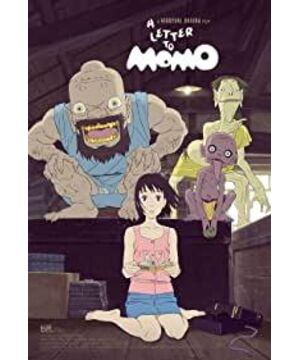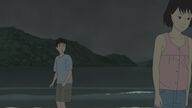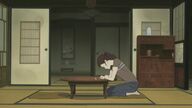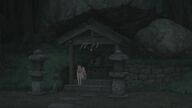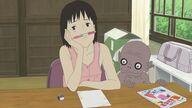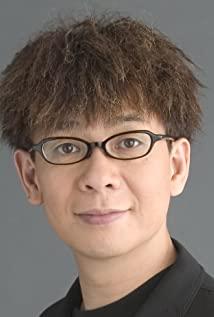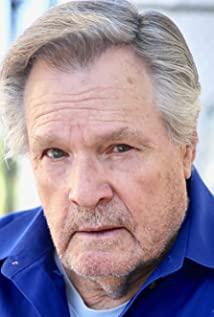Author: Yihe
Oshii Moruto's theatrical animation "Man Wolf" adapted from his original manga script, is known as "the last hand-drawn animation of the 20th century". This work gathers IG gods, Nishio Tetsuya, Kase Kazuya, Ogura Hiromasa, Kamiyama Kenji, etc., all joined it, but it is the first time that the supervisor is the blockbuster Keiyuki Okiura. The animation quality of the whole film is high, the tone is gloomy and dull. Oshii Morukaze, who usually uses animation to talk about politics, is a love tragedy wrapped in political elements, alluding to the black fairy tales sacrificed by politics and the system in the turbulent society after the war.
As one of the three gods of IG, Okura is a representative of realism performers. His paintings and performances focus on realism and smoothness, and he is said to be a person with a 3D computer in his mind. In his early years, he served as the original painter in the works of "Armored Cavalry" and other works under the supervision of Takahashi Ryosuke, and later in Oshii Mamoru's "Mobile Police Tokyo Destruction" and "Mobile Police Peace Defense", Otomo Katsuhiro's "AKIRA" and Kitakubo Hiroyuki's Served as the original painting in "Old Man Z". In 1995, he served as the painting supervisor, storyboard and character design in "Ghost in the Shell". He was the first supervisor in "Man Wolf" in 1999. The work has won many awards, but since then Okinura has not directed anime works anymore. He painted original paintings everywhere, such as "Metropolis", "Star Cowboy Kingdom", "Agent of Delusion", etc., and some of our works. "The Last Vampire", "Mikachoko" and so on.
In 2004, after being appointed as the painting supervisor and character in Mamoru Oshii's "Ghost in the Shell 2: Innocence", the original plan of [Girl and Youkai] aroused Okiura's interest and applied to President Ishikawa , The personal supervision, script and storytelling, which lasted 7 years from 2004 to 2011, is this "Letter to Peach". This work is different from the grand worldview and gloomy tone of Oshii Mamoru animation inherited from its predecessor "Man Wolf", but a light comedy animation combining realistic daily life and fantasy comedy.
In his early years, Okinura had watched a surrealist movie "Alien Adventures". The setting of Uncle Earth and Uncle Alien left a deep impression on him. If you change it to the story of a Japanese girl and an uncle It should be pretty good too. With this idea in mind, Okinura wanted to make a funny healing animation from the beginning, and set his goal for the theater version of "Little Trouble Chie" supervised by Takada. "Little Trouble Chie" was released in 1981. It is a healing work that tells the daily story of the protagonist, the little girl Chie and her family. With the theme of the girl and the uncle of the monster, I also want to tell the story about the family relationship, but the initial plan has already wanted to use the island as the stage. Okinura’s ancestors lived in Seto Inland, and he himself traveled to the Seto Inland Sea after the production of "Man Wolf". From then on, he wanted to try the production. Therefore, the stage setting of the story is set in the Seto Inland Sea where my ancestors once lived. The three combined together gave birth to the script of "Letter to Peach".
After quarreling with his father, he said, "You don't need to come back anymore". As a result, his father died in an accident in the marine investigation team. The guilty daughter Taozi took her father before he could finish writing, and only wrote "To Taozi" three A letter of one word, accompanied my mother to Shiojima in the Seto Inland Sea to live with my uncle and auntie. My mother was busy looking for a job and stayed away from Tokyo's Taozi. She felt guilty for her father and couldn't integrate into life on the small island by the sea. She looked indifferent to her uncles and aunts and the children of the same age on the island. One day, I discovered that there were three monsters in my family who looked slightly hideous: the big old man A Yan, the second shrewd ghost A Chuan, and the third demented cute A Dou. In getting along with the three monsters, Taozi's heart knot was gradually opened. But a misunderstanding caused Tao Zi and her mother to have a misunderstanding. On a stormy night, her mother had an asthma attack. Anxious Tao Zi didn't know what to do. The true origins of the three monsters were also revealed this night...
In this work that combines realistic daily life and fantasy comedy, crossing the bridge in a typhoon is not so easy, the monsters are not so powerful, and the teenagers have no hidden nirvana. Fetters and growth have always been the evergreen themes of anime. The fetters of family affection make Tao Zi unable to let go of her heart knot. With the help of monsters, the fetters of family affection make Tao Zi open her heart knot and complete the reconciliation with her parents. Growing up as a child of the island. From Tao Zi's point of view, this film is through the reconciliation of his father and mother to complete his own growth. From the father's point of view, it is watching peaches' growth. Supervisor Okinura said that he wanted to show his father's sight through the entire work. Although these shots don't exist, it would be nice if you can feel this gentle sight when you watch the entire movie.
biggest highlight of the film is the powerful original paintings, which I have been painting for the next 4 years during the 7 years of production. The great gods led by the Okinawa God: Yasushi Ando, Toshiyuki Inoue, Kazuya Kase, Shinji Suetomi, Tetsuya Nishio, Shinya Ohira, etc. present first-class characters and backgrounds to the audience. The first three drops of water seem to be made in 3D, but they are actually hand-painted by Shinya Ohira. Ando contracted 40 cards from op to entering the house, and the scene of Momoko and Ayan Adou dancing strange dance is a masterpiece by Nishio Tetsuya. It is said that he was not very interested when he painted, but it turned out to be so funny. Okura also drew the scene when Ikuko was crying alone. The production team also went to the Mitarai area in Setouchi to collect the scenery and restored a large number of local scenes. The section of the mechanical cart was harvested during the collection.
characters not only continue the smooth realism that Okinura has always been good at, but also embody the character's sense of life and character characteristics through painting. Not only did the lacrimal glands and nostrils have been meticulously portrayed, such as how long it takes for a minute of tatami to walk, how fast the mechanical trolley goes up the mountain, and the peach lying on the tatami, sitting on a chair in a strange sitting posture. You can feel the sense of life in daily life. In addition to the sense of life of the character itself, the characteristics of the character are also expressed through realistic paintings. Chongpu said that when children are with their parents, when they are with other adults, and when they are with children, they are actually completely different. Although Taozi is an ordinary sixth-grade little girl who can no longer be ordinary, it also contains many facets. Therefore, not only does Taozi's attitude and response to different people in different situations have been considered, but also Taozi's expressions and movements are adjusted according to Taozi's attitude and response.
Okinura, known as "the last hand-painted animation of the 20th century," also used many 3D scenes in this work. The ship at the beginning, the orange forest during the battle against the boar in the middle, and the monster barrier at the end of the climax all used 3D special effects. . Okinura said that there was no CG department in the company when "Man Wolf" was made, so even if you want to use CG, you can't use it. Although the sense of incongruity brought by CG is not very accustomed to me, it is best to use 3D when painting scenes that are too time-consuming. When expressing such natural scenery as the orange grove, Okinura is still worried about whether it can be achieved technically. Frequent discussions with the CG director and repeated simulations. Although it was not as smooth as expected, it was still presented perfectly.
The Uncle Monster is another highlight of this work. The design of Sha Wujing in Toei’s "Journey to the West" in the early years inspired Okinawa’s design. I mentioned the deep impression of "Alien Adventures" on Okinawa. Taking the yellow paper picture book popular in Japan during the Edo period as the motif, it was originally created by Okinura, and Ando refined the character setting of the three uncle monsters. Although the three monsters are visually scary, they steal everything, are greedy and fearful of death. They have funny lines and funny lines. The climax part becomes a partner of justice and comes to help Taozi, which is indeed the mark of the uncle of waste. Match it. In the actual painting process, Okinura himself would think, "If it were Mr. Yasuo Otsuka, how would he describe Ayan?" But because of the realistic painting, there are three slightly hideous monsters. The audience was as frightened as Taozi when he first appeared. Surreal monsters appeared in realistic daily life. These three monsters contracted most of the jokes of the film and formed this fantasy comedy in realistic daily life.
The voice actors and roles in this work are also very suitable. With the monster boss Ayan is Japanese national treasure actor Toshiyuki Nishida. When the production team sent the invitation to Mr. Nishida, they were worried. He didn't expect that he readily agreed. Very dedicated during the recording process. But the role of Momoko's mother Ikuko was initially determined. Okinura once saw Miss Yuka appear on Shimura's TV show. She tied her hair into a ponytail and wore the same clothes as Ikuko. It was really similar. I also listened to the radio drama that Yuka participated in before. Although he had listened to it before, he didn't know that the voice was Yuka's. When I listened again, I felt that it was indeed Yuko's voice. The protagonist Momoko’s dubbing Miyama Kakoi, who appeared in the live-action "Chibi Maruko Cherry", made a deep impression on Okinura. Although Momoko’s role was auditioned by 10 people, she chose it in the end. Miyama. As for Yamaji Koichi's Agawa, it is very different from his previous roles. As for the music used in the film, Anitama has written a related appreciation before, so you can skip over and take a look .
Realism, as IG and Okinawa’s best performance method, is vividly expressed in this work. It can be said that it is almost the same as the real scene. The street scene of the seaside town and the mountaineering and seascape scenes are all hot in recent years. The best Japanese movies are exactly the same. Is the narrow but sloping street exactly the same as in "Haijie Diary"? Does the sea scenery that Momoko and Youkai look at when climbing the mountain by the trio of Momo and Yokai reminds me of the mountains and mists that the protagonist climbed to the top of "Go to the Village"?
is precisely because of the solid realistic daily life that the audience can easily have a sense of substitution. The surreal scene where three monsters appear is also stable, and there is no sense of incongruity. Therefore, if you are accustomed to watching Oshii's dark and depressed children's shoes, you can read "Letter to Peach". The uncles of almost the original crew can not only make cold-blooded menwolves, but also make warm-hearted uncles. If you like this kind of Japanese healing style with a relaxing rhythm and delicate texture, this work is also a masterpiece that you must look at.
View more about A Letter to Momo reviews


